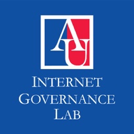By Kenneth Merrill
In the wake of President Trump’s sweeping executive order restricting entry to the US to refugees and immigrants from seven majority Muslim countries and with a nascent anti-Trump movement beginning to coalesce, tech industry executives are struggling to navigate an increasingly politicized environment, in which efforts to engage the new administration are colliding with the demands of politically active usersand widespread dismay within Silicon Valley over the administration’s policies.
Reflecting the potential impact of social media to harness popular discontent and underscoring the politically fraught position many tech CEO’s now find themselves in, the hashtag #DeleteUber began trending over the weekend after the ride-hailing app was criticized for undercutting New York City taxi drivers staging a work stoppage to protest the immigration order. Seizing on the popular backlash against Uber was the company’s chief competitor Lyft, whose co-founders Logan Green and John Zimmer announced a $1m donation to the ACLU and issued the following statement sharply criticizing the executive order:
“This weekend, Trump closed the country’s borders to refugees, immigrants, and even documented residents from around the world based on their country of origin. Banning people of a particular faith or creed, race or identity, sexuality or ethnicity, from entering the U.S. is antithetical to both Lyft’s and our nation’s core values. We stand firmly against these actions, and will not be silent on issues that threaten the values of our community.”
And Lyft was not alone. Twitter, Apple, Facebook, Google, Microsoft, Netflix, and Airbnb all released statements over the weekend, ranging from judicious to vociferous. Among the more strongly-worded repudiations was Aaron Levie of the cloud company Box, who took to Twitter to write, “On every level – moral, humanitarian, economic, logical, etc – this ban is wrong and completely antithetical to the principles of America.”
Meanwhile, Google co-founder Sergei Brin was spotted at a protest at San Fransisco International Airport less than a month after Mr. Brin’s co-founder and current Alphabet CEO Larry Page was among a group of tech executives invited to Trump Tower to meet with then President-elect Trump. And while Trump’s meeting with the tech leaders was seen by many as little more than a charm offensive aimed at paving the way for future cooperation with Washington, a new report by Adam Segal of the Council on Foreign Relations provides some context for why such cooperation is necessary.
“The Silicon Valley-Washington rift has real implications for U.S. cybersecurity and foreign policy,” writes Segal, adding, “An ugly fight between the two sides makes it more difficult to share cyber threat information, counter online extremism, foster global technology standards, promote technological innovation, and maintain an open internet.”
As the report explains, the divide between Washington and U.S. tech firms began in earnest over three years ago with the Snowden revelations, which forced global platforms to reckon with an outraged public demanding greater security and privacy protections. Most notably, these new economic and reputational incentives informed Apple’s decision to make end-to-end encryption standard across the company’s products, prompting a protracted fight with law enforcement after authorities were initially unable to access the contents of a cell phone belonging to one of the San Bernardino attackers.
But if debates over encryption, privacy, and net neutrality created the rift between Silicon Valley and Washington, last week’s immigration order left a gaping chasm between the two.
Aside from the obvious constitutional concerns, the immigration restrictions are particularly worrisome for tech companies that recruit some of their top talent from abroad.
On Wednesday Twitter joined Lyft and others, donating over $1m to the ACLU to help fight the immigration order, while the messaging platform Viber announced it would provide free international calls to the seven countries affected by the executive order. Also on Wednesday, the Hill cited several cybersecurity researchers who are declining to work with law enforcement until the immigration order is revoked.
Meanwhile, Bloomberg reported that an open letter expressing concern over Trump’s immigration policies was circulating through Silicon Valley and beyond, including among CEOs on Wall Street and in the manufacturing, energy, and consumer goods sectors.
Whether or not the combined weight of an overwhelming majority of the tech community is enough to sway the administration’s thinking on immigration (or anything for that matter) remains to be seen. Regardless, critical issues like stepping up cyberdefense, curbing data localization, and protecting a free and open Internet will require some degree of cooperation between Tech and Trump, a prospect that, at the moment, is difficult to imagine.




